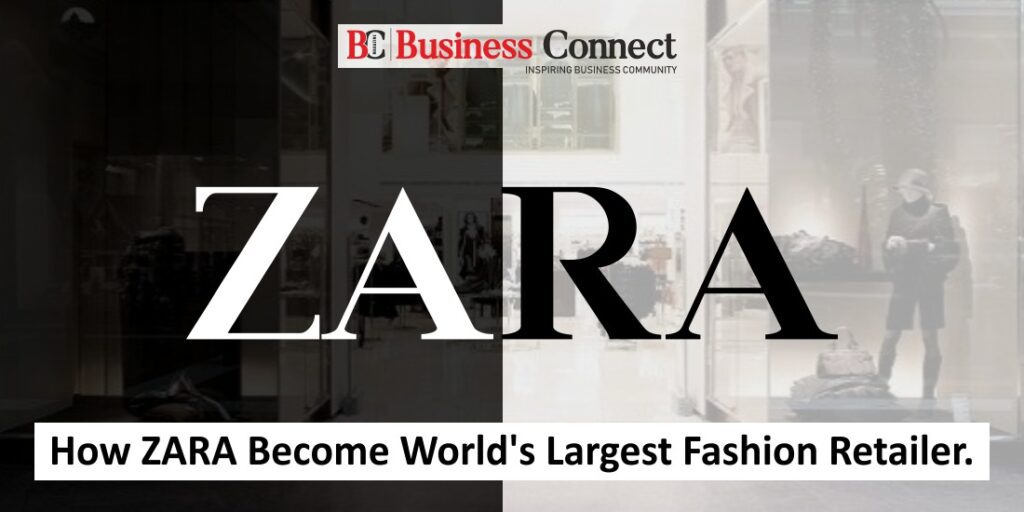How ZARA Become World’s Largest Fashion Retailer.
You must have heard about fresh-baked cake or chocolate, but have you ever heard about freshly baked clothes? Zara, the world’s fastest fashion brand and largest fashion retailer until now. This Spanish brand has made a splash in the fashion industry as a being affordable iconic fashion brand. Zara includes men’s and women’s clothing wears, accessories, shoes, swimwear, beauty, and perfume.
In 1975, The first Zara store was opened in Galicia, Spain. The brand was founded, by Amancio Ortega and his ex-wife Rosalia Mera, based on creating versions of high-end looks for an affordable price. Setting it apart from many other high street fashion brands both then and now. Zara was ranked 29th on the Interbrand list of the best global brand in 2019.
The early history of Zara
In the early 1960s, Amancio Ortega was working for a local shirtmaker in A Coruna, Spain. While working for them, he started making his own clothing design at home with his wife. By the time he had saved a sufficient amount of money to start a small factory. In 1975, Amancio Ortega and his wife Rosalia Mera set up a store in Galicia, Spain. Ortega initially gave name to the company Zorba after the classic film Zorba the Greek, but they had to change their original name when they found two blocks away a bar had the same name.
They rearranged the letters molded for the sign to “ZARA”. They used the extra “A” which came from an additional set of letters to create Zara. It was the first store conceived as an affordable brand that would provide higher-end clothing fashions. After increasing demand, Ortega expanded stores all across Spain.
Expansion
In 1985, Ortega created a parent company called Inditex for Zara before globalizing. The international expansion began in 1988, Zara store was opened in Portugal for the very first time internationally. In 1989, they entered North America, then France in 1990. Now, The company operates over 2,220 stores in more than 88 countries.
In 2014, the company brought RFID technology for their stores that are security tag attached with cloths, that is removed once you buy clothes. The microchip gives access to take inventory so quirkily by detecting radio signals from RFID tags. When an item gets sold, the stockroom will have a notification about that product.
Business strategies
The Company neither advertises nor discounts. They prefer to invest those revenues in setting up new stores instead. In the 1980s, Ortega designed a retail business model to make faster, he reformed every aspect of design manufacturing and distribution so that product can be hanged at the stores with a very short delay.
Customer co-creation
Zara retailer gives an ear to customer’s demands so that they can design the product as per fashion trend and requirement. It has a very interesting story, how Zara co-creates its products leveraging its customer’s demand. In 2015, A woman named Miko walked into a Zara store for pink a scarf. Unfortunately, she didn’t get the one at the store due to unavailability. Simultaneously, the same incident occurred everywhere, Michelle in Toronto, Elaine in San Francisco, and Giselle in Frankfurt, who all left the store without scarves – This continued over the next few days. The surprising fact was, 7 days later, the Zara store started selling pink scarves.
After this incident, The company earned many customers’ trust. The company always eagers to learn customer’s insights, which makes them innovative.
Super-efficient supply chain.
Its highly responsive supply chain enables the export of garments 365 days of the year, as result new product to store a twice week. After being designed the product, Zara takes only fifteen days from the designing to hanging in the store, the industry average is six months, which makes the company different.
Give more options to customers
The Company manufactures varieties of products on a big scale, instead of producing a single design on a big scale. Zara produces more than 12,000 designs annually, which offers an exclusive feeling to customers. Manufacturing lower quality of a single product has advantages like reduce the chance of failing, prevent the overstock issue, and most important customers can buy the product without delaying time.
Also Read:- List Of Top 10 Richest Person in the World



